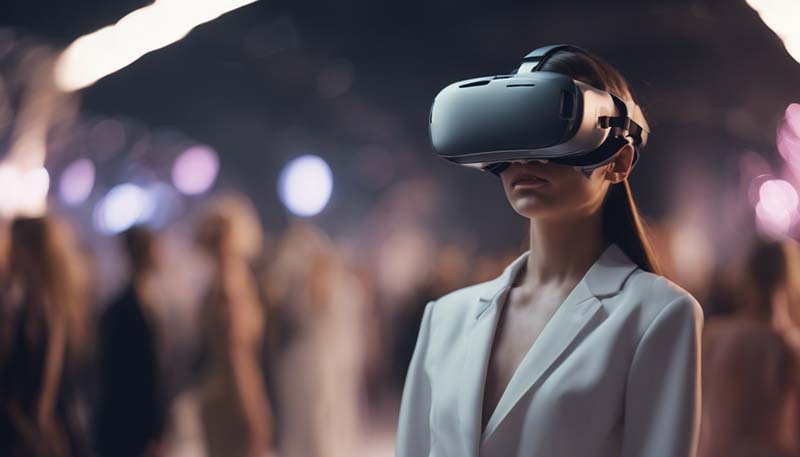The Future of Virtual Reality in Fashion Shows
The Future of Virtual Reality in Fashion Shows
Virtual reality (VR) has been making waves across various industries, and fashion is no exception. As technology continues to advance, the potential for VR in fashion shows is becoming increasingly evident. This article will explore the future of VR in fashion shows, discussing its current state, potential benefits, challenges, and possible applications.
Current State of VR in Fashion
While VR technology has been around for a few decades, it has only recently started to gain traction in the fashion industry. Some fashion brands and designers have already begun experimenting with VR to create immersive and interactive experiences for their customers. For example, Tommy Hilfiger and Rebecca Minkoff have hosted VR fashion shows, allowing viewers to experience the event from the comfort of their own homes.
Potential Benefits of VR in Fashion Shows
Immersive Experiences
One of the most significant benefits of VR in fashion shows is the ability to create immersive experiences for viewers. With VR, attendees can feel as if they are physically present at the event, even if they are thousands of miles away. This can lead to a more engaging and memorable experience for both the audience and the fashion designers.
Accessibility
VR can make fashion shows more accessible to a wider audience. Traditionally, attending a fashion show requires an invitation, which can be difficult to obtain for the general public. However, with VR, anyone with a compatible headset can experience the show, regardless of their location or social status.
Advertisement
Cost-Effective
Hosting a fashion show can be expensive, with costs associated with venue rentals, catering, and other logistics. VR fashion shows can potentially reduce these costs, as they eliminate the need for a physical location and can be attended by a larger audience without additional expenses.
Environmental Impact
Fashion shows can have a significant environmental impact, particularly when it comes to waste generated from the production of physical invitations, programs, and other materials. By hosting a VR fashion show, designers can reduce their carbon footprint and promote a more sustainable approach to fashion events.
Challenges of VR in Fashion Shows
Limited Adoption
One of the primary challenges of VR in fashion shows is the limited adoption of VR technology among the general public. While VR headsets have become more affordable and accessible in recent years, they are still not as widespread as other forms of technology, such as smartphones or computers.
Technical Difficulties
VR technology can be prone to technical difficulties, such as latency, motion sickness, and hardware compatibility issues. These challenges can detract from the overall experience and may deter some users from participating in VR fashion shows.
Lack of Physical Interaction
One of the drawbacks of VR is the lack of physical interaction with the clothing and other elements of the fashion show. Attendees may miss the tactile experience of feeling the fabric and seeing the details up close, which can be an essential aspect of appreciating the craftsmanship and design of the garments.
Possible Applications of VR in Fashion Shows
Virtual Runways
Designers can create virtual runways that transport viewers to different environments, such as exotic locations or futuristic settings. This can add a layer of excitement and novelty to the fashion show experience, making it more memorable and engaging for the audience.
Interactive Elements
VR can enable interactive elements within the fashion show, such as allowing viewers to vote on their favorite looks or even customize the models' outfits in real-time. This can create a more personalized and engaging experience for the audience, fostering a sense of connection with the fashion brand.
Product Previews and Pre-Orders
VR can be used to showcase upcoming collections and allow viewers to pre-order items directly from the fashion show. This can help designers gauge consumer interest in specific pieces and adjust their production plans accordingly.

Designer Collaborations
VR can facilitate collaborations between designers from different parts of the world, allowing them to work together on a collection and present it in a virtual fashion show. This can lead to more diverse and innovative fashion designs, as designers can draw inspiration from a broader range of cultural influences.
Conclusion
The future of virtual reality in fashion shows is promising, offering numerous benefits such as immersive experiences, increased accessibility, cost savings, and reduced environmental impact. However, challenges such as limited adoption, technical difficulties, and the lack of physical interaction must be addressed to ensure the widespread adoption of VR in the fashion industry. As technology continues to evolve, it is likely that VR will play an increasingly significant role in fashion shows, transforming the way designers and consumers interact with fashion events.